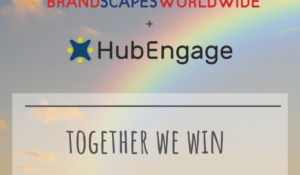You’ve probably left a meeting or two with senior staff over the years thinking, “That could have been handled with an email.” Or you’ve had your phone blow up with texts from a coworker looking for a routine report. Maybe you’re one of the lucky few who’s received a voicemail from someone saying they won’t be in – ever again.
These instances can be annoying – and not just for you. In the meeting example, your colleague could tell from your body language in that meeting that you didn’t want to be there. Or, in the texting example, perhaps your coworker was aggravated that you didn’t respond to his or her texts. The truth is, generational differences cause many common workplace communication problems.
Organizations often dismiss these communication issues as minor inconveniences. But by ignoring them, they are weakening their workplace culture. It’s a form of denial that eats away at employee engagement and production. Most workers are either Generation X (born roughly 1963-1978) or Generation Y (1979-1995). However, millennials represent 35% of the global workforce in 2020 and are expected to account for a full 75% of the workforce by 2025.
The differences are simply due to generational gaps. A generation gap is the difference of opinions, skills, values, attitudes and beliefs between one generation and another. As more and more millennials enter the workforce, it’s important that employers find ways to bridge these communication gaps. Here are 5 common communication problem areas between Gen Xers and Millennials, followed by how one tool can help you address them all.
Problem #1: Conflicts Over Channels of Communication
Have you had trouble reaching a Millennial coworker? Turn to the web. Millennials, as a rule, are almost always online. Oddly enough, their comfort with technology itself can be a barrier to communicating. They can be awkward with direct personal communication because of it.
Experts say you need to take care with the words you use, in person or electronically when communicating with Millennials. What you say and how you say it are important. Millennials tend to be idealistic, requiring prompt feedback and meaningful interaction. Conversely, Gen Xers tend to be blunt and direct, talking in short sound bites.
It’s easy to see the trouble here. Say a Gen X employee keeps leaving voicemails for a Millennial coworker. And the Millennial responds only by text. The inability to have a verbal conversation irritates the Gen Xer. And repeated voicemails that a short text could address frustrate the Millennial, causing frustration out of cultural preferences.
Problem #2: What a Work Day Looks Like
Gen Xers and Millennials came of age in very different cultures. Their upbringing and struggles defined their work ethic, job performance, and goals. Take work-life balance, for example. Both generations consider it essential for job satisfaction. But there’s a significant difference in how each group expects to experience it. That stems from their relationship to technology and communication.
Generation X, for instance, expects employers to enforce strict 9-to-5 office hours. For them, working extra hours is unacceptable, and in some cases a deal-breaker. Millennials demand work-life balance. That includes telecommuting, flexible work hours, and opportunities to relax at the office.
Problem #3: How to Measure Career Progression
Salary, perks, and benefits motivate both Gen Xers and Millennials. But there are other drivers as well. Generation X, for instance, is often driven by a need for authority, autonomy, and job security. Their loyalty toward work and supervisor can also act as stimuli. They believe in a proper step-by-step power structure where a boss is a symbol of authority. And their concept of professional achievement is the corner office with a great view.
Millennials want to find purpose in their work and career along with company-backed learning opportunities. They could not care less for a fancy office; just give them bean-bags, a laptop, and unlimited WIFI.
They believe in a “flat hierarchy” where executives, managers, and directors are simply each other’s colleagues. They want to work in a team setting, feel heard, given regular feedback, and encouraged to be creative. Allow them to work hard but leave on time.
Problem #4: How to Recognize in a Way that Motivates
Just like hierarchy and work hours, recognizing millennials and Gen Z can be quite challenging if the psychology isn’t understood. Calling these generations entitled or arrogant and not changing the system will not bode well with motivating the workforce. Millennials respond to real-time recognition. Outline recognition based on more day to day activities that come around more regularly. Base recognitions around acquiring and learning new skills thereby promoting them to constantly upgrade their circle of competency based on their career path. Automating the recognition process with an employee recognitions platform will allow you to recognize, engage and motivate employees using a platform they prefer.
Conclusion: More and Better Communication is Key
Cross-generational issues in the workplace are nothing new. The details may change, but every generation has its complaints about “kids these days.” Organizations that recognize and address challenges create healthier, happier, and more productive workplaces. Ensure that ageism doesn’t affect any process of the organization – the hiring process to promotions and policy making.
None of the problems posed above have a simple or easy solution. Each one is proof you need more and better communication throughout the organization. And each solution demands training, information, and data. An all-in-one employee engagement app is the perfect tool for solving them.
Need a better way to communicate with employees? A mobile app is a convenient, effective, and easy way to make that happen. It’s time to consider an employee app like HubEngage. Its sole purpose is to help you maximize your employee engagement program. Unleash the power of an engaged workforce. Schedule a complimentary demonstration today. Reach out to one of our product specialists now.













